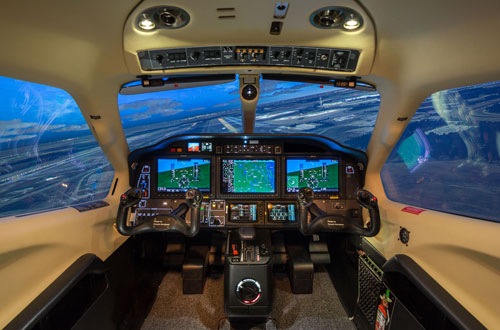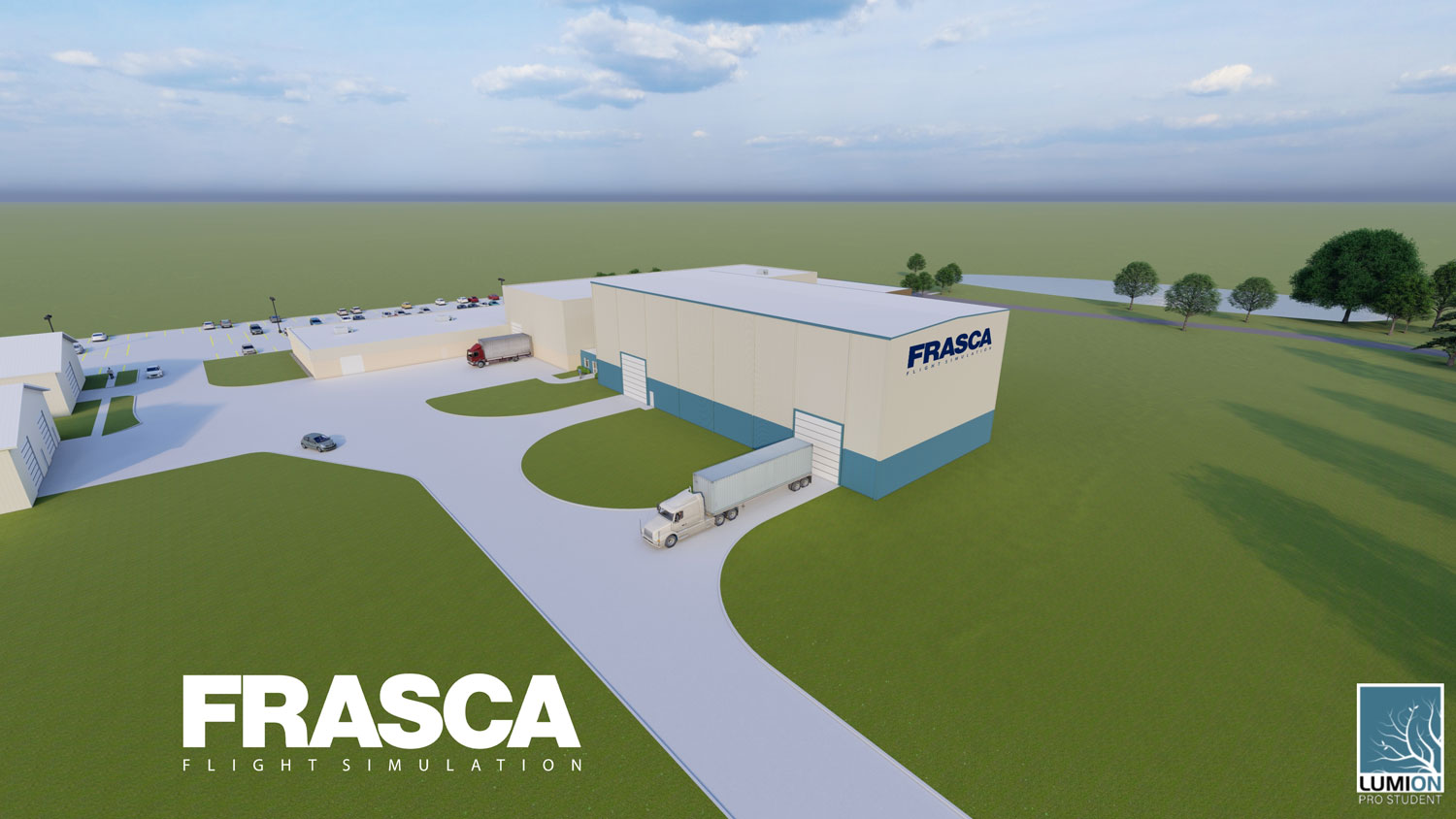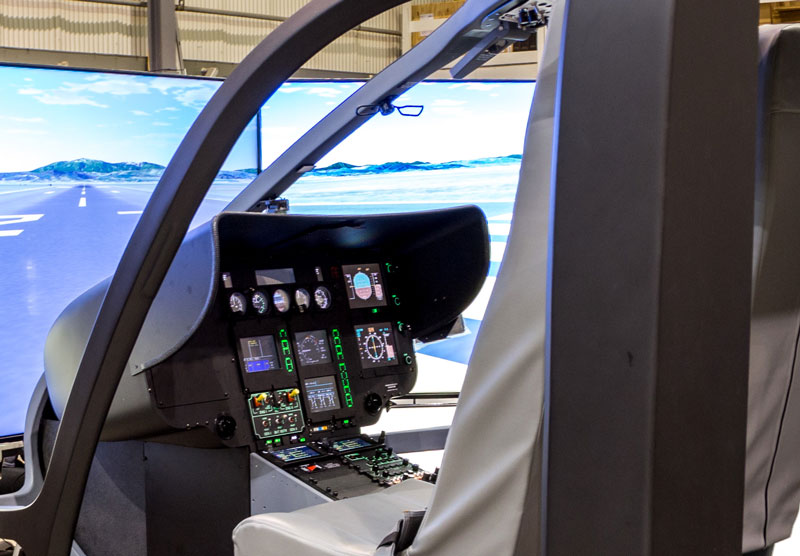Unlike competitors who often start with commercially available computer games and attempt to boost fidelity from there, at Frasca, we produce our own flight modeling for our Level D full-flight simulators. We take what we learn in developing this high-level modeling and apply it down the line of our simulators.
We achieve this by investing in high fidelity in three significant ways – avionics, flight characteristics, and physical components. First, we incorporate actual Garmin G1000 equipment and software into our simulators, obtained directly from Garmin under a licensing agreement authorizing its commercial use. This allows students to learn how to use the system, make correct inputs, and learn button/knob placement from day one in the simulator. When they step into the actual aircraft, everything they learned about the G1000 and its operation is fully transferable and familiar, allowing for a smooth transition and reduced learning curve.
Second, we invest a great deal in test flying the actual aircraft our simulators emulate, recording detailed flight data. We then program our simulators to behave precisely as the aircraft did during all maneuvers. As a result, aircraft responses are accurately illustrated through visual cues, avionics, and, in the case of full flight simulators, movement. When the student then flies the aircraft, reactions to inputs are familiar and predictable. This allows students to progress in less time than if they needed to become familiar with the aircraft’s response versus what they’d learned to expect in the simulator.
Finally, we invest in high quality, commercial-grade components for our simulators. From yokes, collectives, cyclics, and pedals to power levers, knobs, and switches, our components are engineered to withstand forces that greatly exceed those that encounter regular use. We know you rely on your simulator to maintain peak operation. Our components not only look and feel like the aircraft’s, but they can withstand far more heavy use than the standard entertainment-grade parts found in other products, giving you the peace of mind that your simulator will remain reliably ready to fly.
Investing in High Fidelity
The fidelity level of a simulator directly affects the cost. Our investment in flight testing, data collection, OEM software and data licensing, and developing robust components come included in our simulator price. In return, high fidelity simulators are investments that pay dividends.
Operators who choose to invest in high fidelity simulators experience medium- and long-term savings benefits. When operating simulators that mirror their aircraft, operators experience a much higher profit margin per, and a much lower hourly rate for the student, compared to the aircraft. Students learn essential procedural skills that are completely transferable in these devices, later experiencing an overall reduction in flight time required to master skills, again reflected as savings. Reduced flight time per student also allows operators to train more students, again increasing profits.
Additionally, operators build a reputation for quality instruction at an overall cost savings for students. Students further build on this through word-of-mouth testimonials and referrals, arguably one of today’s most powerful marketing methods.
Commitment to Quality
Frasca continues to invest in research and development of our high fidelity simulators. We continuously monitor the latest in technology, optimizing the interfaces between software and hardware components to ensure maximum learning effectiveness. We also continue to investigate more efficient manufacturing methods to lower our physical components’ costs, helping keep our price competitive for our customers.
When it comes to highly realistic training with the best transfer of learning for students, trust Frasca to maximize your training potential.




